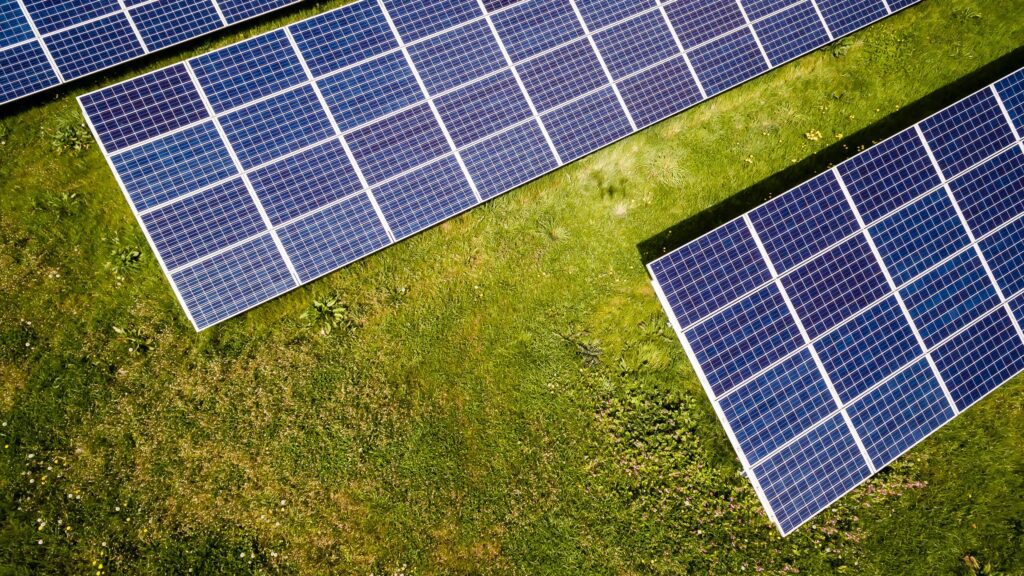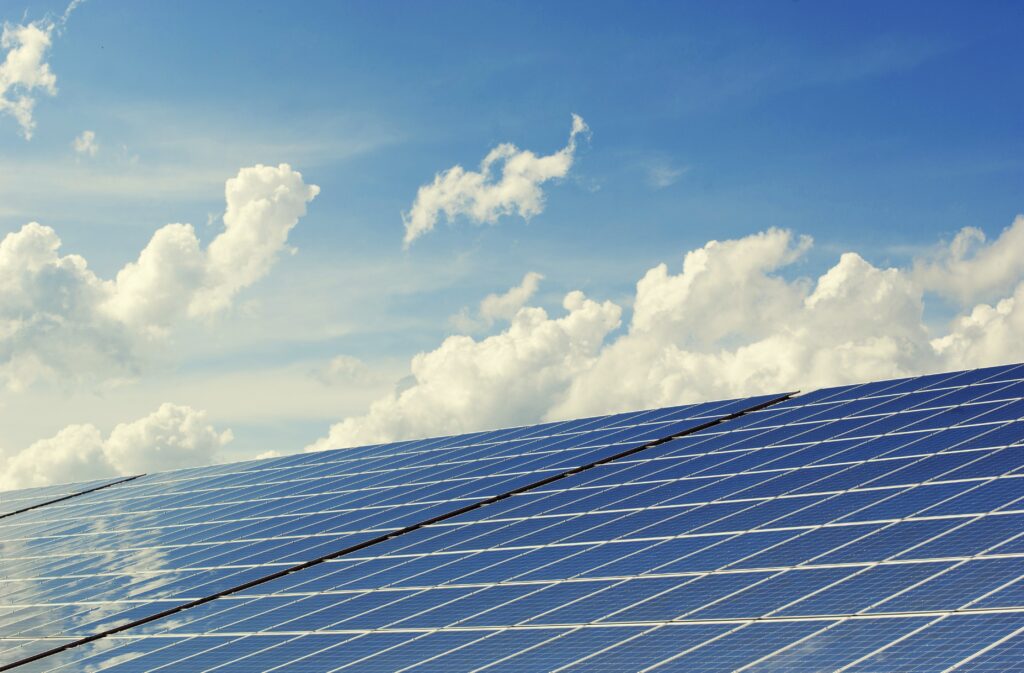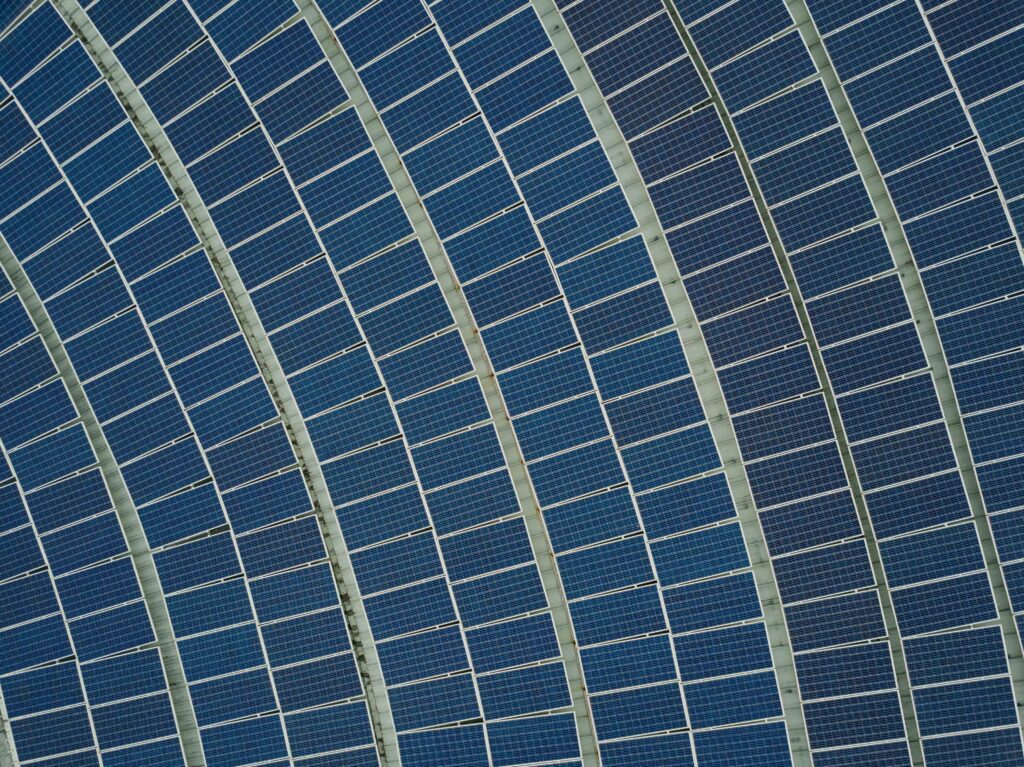In today’s world, finding ways to save energy is very important. One exciting idea is using solar-powered HVAC systems. HVAC stands for heating, ventilation, and air conditioning. We all use these systems to keep our homes comfortable. By using solar power, we can make these systems work better and be more eco-friendly.
Think about having a heating and cooling system that uses the sun’s power to keep your home comfortable all year round. Solar-powered HVAC systems do exactly that. They use solar panels to catch energy from the sun and turn it into electricity to run your HVAC system. This means you can have lower energy bills, depend less on fossil fuels, and help reduce greenhouse gas emissions.
What is a Solar-Powered HVAC System?
A solar-powered HVAC system is an innovative solution that uses energy from the sun to heat, cool, and ventilate your home. HVAC stands for heating, ventilation, and air conditioning, which are essential for maintaining a comfortable indoor environment. By harnessing solar energy, these systems provide a more eco-friendly and cost-effective way to manage your home’s climate.

How it Works
A solar-powered HVAC system utilizes solar panels, typically installed on the roof, to capture sunlight. These panels contain photovoltaic (PV) cells that convert sunlight into direct current (DC) electricity. The electricity generated is then used to power the heating, ventilation, and air conditioning components of your home, creating a more sustainable and cost-efficient way to manage indoor climate control.
Solar Panels Capture Sunlight:
The solar panels absorb sunlight and convert it into DC electricity through the PV cells. These cells are made of semiconductor materials like silicon, which generate an electric current when exposed to sunlight.
Inverter Converts DC to AC:
The DC electricity generated by the solar panels is then sent to an inverter. The inverter’s job is to convert the DC electricity into alternating current (AC) electricity, which is the type of electricity used by most household appliances, including HVAC systems.
Powering the HVAC System:
The AC electricity is used to power the HVAC system, which includes components like the furnace, air conditioner, and ventilation fans. This allows the system to heat, cool, and ventilate your home using clean, renewable energy.
Excess Energy Storage:
On sunny days, the solar panels might produce more electricity than the HVAC system needs. This excess energy can be stored in batteries for later use, ensuring that your home remains comfortable even when the sun isn’t shining.
Grid Connection:
Many solar-powered HVAC systems are connected to the electrical grid. This means that if your system generates more electricity than you use, you can send the excess energy back to the grid. In some areas, utility companies offer credits for this excess energy, further reducing your energy costs.

By using solar power to run your HVAC system, you can significantly reduce your reliance on traditional energy sources like coal and natural gas. This not only lowers your energy bills but also helps decrease your carbon footprint, contributing to a cleaner, healthier environment.
Benefits of Solar-Powered HVAC Systems
Switching to a solar-powered HVAC system offers many advantages that can help you save money and protect the environment. Let’s look at some key benefits.
Cost Savings
One of the main benefits of solar-powered HVAC systems is saving money. After the system is installed, you can see a big drop in your electricity bills. Here’s how you save:
Lower Electricity Bills:
By using solar energy, you need less electricity from the grid, which means smaller bills each month.
Tax Credits and Rebates:
Many governments offer tax breaks and rebates to encourage people to use solar energy. These can make the installation cost much lower.
Higher Home Value:
Homes with solar-powered HVAC systems can be worth more because buyers know they will save money on energy costs.
Environmental Impact
Solar-powered HVAC systems are better for the environment. They use clean energy from the sun and help reduce pollution. The benefits for the environment include:
Less Carbon Emissions:
Solar energy doesn’t produce harmful greenhouse gases like fossil fuels do, which helps fight climate change.
Cleaner Air:
Solar power doesn’t release pollutants into the air, making it healthier for everyone.
Saving Natural Resources:
Solar energy is abundant and renewable, unlike fossil fuels, which are limited and harmful to extract.
Energy Independence
Using solar-powered HVAC systems can make you less dependent on traditional energy sources. This can be especially helpful during power outages or in places where electricity is not always available. The benefits of energy independence include:

Reliable Power:
Solar energy is dependable, especially in sunny areas. Even on cloudy days, modern solar panels can still produce electricity.
Protection from Rising Energy Costs:
By making your own electricity, you’re less affected by changes in energy prices.
Self-Sufficiency:
In remote areas, solar-powered HVAC systems provide a practical solution for heating, cooling, and ventilation without needing a connection to the power grid.
Types of Solar-Powered HVAC Systems
Solar-powered HVAC systems come in several types, each offering distinct advantages suited to different needs and environments. Understanding these types can help you select the most suitable system for your home.
Solar Thermal Systems
Solar thermal systems harness solar energy to directly heat water or air for space heating or hot water supply. These systems are highly efficient and effective in sunny climates. Here’s a detailed look at how they operate:
Solar Collectors:
These panels capture sunlight and convert it into heat energy. There are two main types: flat-plate collectors and evacuated tube collectors. Flat-plate collectors are durable and commonly used, while evacuated tube collectors are more efficient in colder climates.
Heat Transfer Fluid:
A fluid, typically water or an antifreeze solution, circulates through the collectors, absorbing heat energy from the sun.
Heat Exchanger:
The heated fluid passes through a heat exchanger, transferring its thermal energy to water or air used for heating purposes in your home.
Solar thermal systems are particularly beneficial for homeowners looking to reduce their reliance on traditional heating methods and lower utility bills through renewable energy.
Solar Photovoltaic (PV) Systems
Solar PV systems convert sunlight into electricity using photovoltaic cells within solar panels. This electricity powers various components of your HVAC system and other household appliances. Here’s a detailed overview of their operation:
Solar Panels:
Made up of photovoltaic cells, solar panels generate direct current (DC) electricity when exposed to sunlight.
Inverter:
The DC electricity produced by the panels is converted into alternating current (AC) electricity by an inverter, which is compatible with standard home electrical systems.
Electric HVAC System:
The AC electricity generated powers the electrical components of your HVAC system, such as fans, compressors, and controls.
Solar PV systems offer flexibility and can be integrated into both new construction and existing homes, providing sustainable energy and reducing carbon footprint.
Hybrid Solar Systems
Hybrid solar systems combine solar thermal and solar PV technologies to provide both heating and electricity. These systems offer versatility and efficiency in energy usage. Here’s a more detailed look at their operation:
Combined Collectors:
Hybrid systems incorporate solar collectors for heating and solar panels for electricity generation, maximizing energy efficiency.
Integrated Controls:
Advanced control systems manage the operation of both heating and electricity generation, optimizing energy use based on available sunlight and household demand.
Backup Options:
Hybrid systems often include backup power solutions, such as battery storage or grid connection, ensuring uninterrupted operation during periods of low sunlight.
By utilizing hybrid systems, homeowners can achieve significant energy savings, enhance their home’s energy independence, and contribute to environmental sustainability.
Installation Considerations for Solar-Powered HVAC Systems
Installing a solar-powered HVAC system involves meticulous planning and attention to detail to ensure optimal performance, energy efficiency, and long-term sustainability. Here’s an in-depth guide to help you navigate the installation process effectively, while keeping it easy to understand and SEO-friendly:
Site Assessment and Preparation
Before proceeding with the installation of solar panels for your HVAC system, conduct a comprehensive site assessment to determine the ideal placement and conditions:
Roof Analysis:
Evaluate the orientation and pitch of your roof to maximize solar exposure. South-facing roofs with angles between 15 to 40 degrees typically receive the highest amount of sunlight throughout the day.
Shade Analysis:
Identify potential sources of shading from nearby trees, buildings, or structures. Minimizing shading ensures maximum solar panel efficiency and energy production.
Structural Integrity:
Assess the structural integrity of your roof to support the weight of solar panels and additional equipment. Ensure the roof can withstand wind loads and other environmental factors.
System Sizing and Capacity Planning
Properly sizing your solar-powered HVAC system is critical for meeting your home’s energy demands efficiently and effectively:
Energy Consumption Assessment:
Analyze your household’s historical energy usage data to understand peak demand periods and overall electricity consumption patterns.
Solar Potential Evaluation:
Use local climate data and solar insolation maps to estimate the solar energy potential at your location. Consider factors like seasonal variations and weather patterns.
System Capacity Calculation:
Determine the optimal size of your solar array based on energy consumption metrics and available roof space. Ensure the system can generate sufficient electricity to power your HVAC system and other household appliances.
Equipment Selection and Integration
Selecting high-quality equipment is essential to ensure reliability, performance, and longevity of your solar-powered HVAC system:
Solar Panel Choice:
Choose reputable solar panel brands known for efficiency, durability, and warranty coverage. Consider factors like panel efficiency ratings and degradation rates over time.
Inverter Specifications:
Select inverters that match the capacity of your solar panels and efficiently convert DC electricity into AC electricity for use in your home.
HVAC System Compatibility:
Ensure your HVAC system, whether it’s an electric heat pump or air conditioner, is compatible with solar integration. Optimize system configurations to maximize energy savings and operational efficiency.
Professional Installation Process
The installation of solar-powered HVAC systems should be performed by qualified professionals to ensure safety, compliance with building codes, and optimal system performance:
Panel Installation:
Expert installers securely mount solar panels on your roof or ground-mounted racks, positioning them to capture maximum sunlight exposure throughout the day.
Electrical Connection:
Properly wire solar panels to the inverter and connect them to your home’s electrical system. Ensure safe and efficient energy transfer from solar panels to your HVAC system and other electrical loads.
System Integration:
Integrate your HVAC system with the solar power setup, including controls and monitoring systems, to optimize energy usage and operational performance.
Maintenance and Monitoring Practices
Implementing regular maintenance and monitoring practices is essential to maximize the efficiency and longevity of your solar-powered HVAC system:
Routine Cleaning:
Periodically clean solar panels to remove dirt, dust, or debris that can obstruct sunlight and reduce energy production efficiency.
Component Inspection:
Regularly inspect wiring, inverters, and HVAC connections for signs of wear, damage, or malfunction. Address any issues promptly to prevent system downtime.
Performance Monitoring:
Utilize monitoring tools and software to track real-time energy production metrics and system performance. Monitor energy consumption patterns to identify opportunities for further optimization and energy savings.
By following these detailed installation considerations for your solar-powered HVAC system, you can achieve significant energy savings, reduce your environmental impact, and enhance the comfort and sustainability of your home.
Maintenance and Monitoring of Solar-Powered HVAC Systems
Proper maintenance and regular monitoring are essential to ensure the ongoing efficiency and longevity of your solar-powered HVAC system. Here’s a detailed look at the best practices for maintenance and monitoring:
Regular Cleaning and Inspection
Cleaning Solar Panels:
Periodically clean the solar panels to remove dust, dirt, leaves, and other debris that can accumulate over time. Clean panels ensure maximum sunlight absorption and energy production efficiency.
Inspecting Components:
Regularly inspect all system components, including solar panels, inverters, wiring, and HVAC connections. Look for signs of wear, damage, or corrosion that could affect performance.
Checking for Shading:
Monitor the surroundings for any new sources of shading, such as growing trees or new constructions. Address shading issues promptly to maintain optimal solar energy production.
Monitoring Performance Metrics
Using Monitoring Tools:
Utilize monitoring software or tools provided by your solar installer to track real-time and historical performance metrics. Monitor energy production levels, system efficiency, and overall performance trends.
Analyzing Data:
Analyze the collected data to identify any patterns or anomalies in energy production. This analysis helps in optimizing system performance and identifying potential issues early on.
Adjusting Settings:
Make necessary adjustments to system settings based on performance data analysis. Optimize operational parameters to maximize energy savings and efficiency.
Troubleshooting and Maintenance Tips
Addressing System Issues:
- Respond promptly to any alerts or notifications from your monitoring system indicating performance issues or malfunctions. Contact your solar installer for professional assistance if needed.
Seasonal Maintenance:
Perform seasonal maintenance tasks, such as checking connections and cleaning panels before winter to ensure optimal performance during colder months.
Professional Inspections:
Schedule regular inspections by certified professionals to conduct thorough assessments of your solar-powered HVAC system. Professionals can identify and address potential issues that may not be visible during routine maintenance.
If You Have any other doubts or queries,Feel Free to Contact Us On Our LinkedIn Page!
Conclusion
Switching to a solar-powered HVAC system is an excellent way to save money, protect the environment, and increase energy independence. By harnessing the power of the sun, these systems provide efficient heating, cooling, and ventilation for your home while significantly reducing reliance on fossil fuels. The benefits are numerous: cost savings through lower electricity bills and potential tax credits, reduced carbon emissions, cleaner air, and greater energy self-sufficiency.
With various types of solar-powered HVAC systems available—such as solar thermal, solar photovoltaic (PV), and hybrid systems—there is a solution for every need and climate. Proper installation, regular maintenance, and continuous monitoring are essential to ensure these systems operate at peak efficiency and provide long-term sustainability.
By making the switch to solar-powered HVAC, you contribute to a cleaner, greener future while enjoying the comfort and cost savings in your own home.
FAQ
Professional inspections should be scheduled periodically to ensure optimal operation. Excess energy can be stored in batteries for later use. Many systems are also connected to the grid, allowing you to sell excess energy back to the utility company, often receiving credits that further reduce your energy costs.
Modern solar panels are designed to be effective even in less sunny conditions. While performance is best in direct sunlight, panels can still generate electricity on cloudy days. Solar thermal systems with evacuated tube collectors can be efficient in colder climates.
1. What is a solar-powered HVAC system?
A solar-powered HVAC system uses solar panels to convert sunlight into electricity, which then powers the heating, ventilation, and air conditioning (HVAC) systems in your home. This allows for an eco-friendly and cost-effective way to manage your home’s climate.
2. How do solar panels work in an HVAC system?
Solar panels capture sunlight and convert it into direct current (DC) electricity using photovoltaic (PV) cells. An inverter then converts this DC electricity into alternating current (AC) electricity, which powers the HVAC system.
3. What are the benefits of using a solar-powered HVAC system?
The main benefits include cost savings on energy bills, reduced reliance on fossil fuels, lower carbon emissions, improved air quality, and increased energy independence. Additionally, you may be eligible for tax credits and rebates, and your home’s value may increase.
4. What types of solar-powered HVAC systems are available?
There are three main types:
Solar Thermal Systems:
These use solar energy to directly heat water or air.
Solar Photovoltaic (PV) Systems:
These convert sunlight into electricity to power HVAC components.
Hybrid Solar Systems:
These combine both solar thermal and solar PV technologies for maximum efficiency.
5. How do I choose the right system for my home?
Consider factors such as your energy consumption, climate, roof orientation, and budget. Consulting with a professional installer can help determine the best system based on your specific needs and location.
6. What is involved in the installation process?
Installation involves assessing your roof’s suitability, sizing the system based on your energy needs, selecting high-quality equipment, and professional installation. This includes mounting solar panels, wiring, and integrating the HVAC system with the solar setup.
7. How do I maintain a solar-powered HVAC system?
Regular maintenance includes cleaning the solar panels, inspecting all system components, checking for shading issues, and using monitoring tools to track performance. Professional inspections should be scheduled periodically to ensure optimal operation.
8. Can excess energy be stored or sold back to the grid?
Yes, excess energy can be stored in batteries for later use. Many systems are also connected to the grid, allowing you to sell excess energy back to the utility company, often receiving credits that further reduce your energy costs.
9. Is solar power effective in cloudy or cold climates?
Modern solar panels are designed to be effective even in less sunny conditions. While performance is best in direct sunlight, panels can still generate electricity on cloudy days. Solar thermal systems with evacuated tube collectors can be efficient in colder climates.
One Response